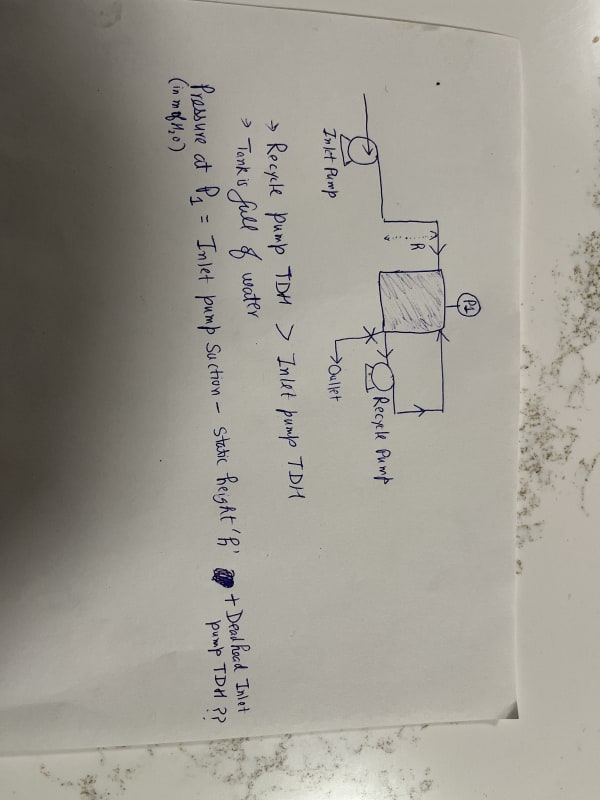I have an interesting hypothetical hydraulics problem in order to better my understanding. Please refer to the attached diagram for clarity.
Imagine a closed tank with a roof (not open to atmosphere). It has one inlet, one outlet, one recycle. Inlet line to the tank is through a centrifugal pump and the recycle line also has a centrifugal pump. Recycle pump TDH > Inlet pump TDH. Assume outlet to the tank is blocked and the level in the tank quickly rises until it’s full of water upto the roof. Now since the tank is already full of water, would the pressure at the top of the tank be (Inlet pump suction) + (Inlet pump deadhead TDH) - (Static height losses)? Zero flow through inlet and some flow through the recycle? Neglect friction losses.
My reasoning is that since inlet pump has a lower TDH, it does not have enough head to push the liquid into the tank once the tank is full. Therefore, the tank will see Inlet pump’s head head pressure. And flow through the recycle pump would be according to the driving force of P1 - Recycle Pump Discharge Pressure.
Thanks
Imagine a closed tank with a roof (not open to atmosphere). It has one inlet, one outlet, one recycle. Inlet line to the tank is through a centrifugal pump and the recycle line also has a centrifugal pump. Recycle pump TDH > Inlet pump TDH. Assume outlet to the tank is blocked and the level in the tank quickly rises until it’s full of water upto the roof. Now since the tank is already full of water, would the pressure at the top of the tank be (Inlet pump suction) + (Inlet pump deadhead TDH) - (Static height losses)? Zero flow through inlet and some flow through the recycle? Neglect friction losses.
My reasoning is that since inlet pump has a lower TDH, it does not have enough head to push the liquid into the tank once the tank is full. Therefore, the tank will see Inlet pump’s head head pressure. And flow through the recycle pump would be according to the driving force of P1 - Recycle Pump Discharge Pressure.
Thanks

